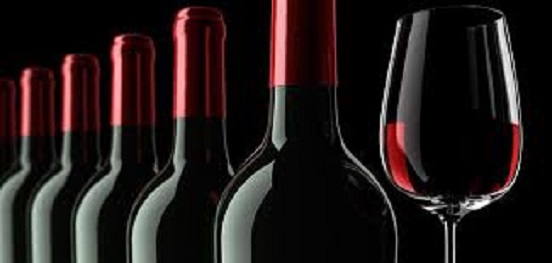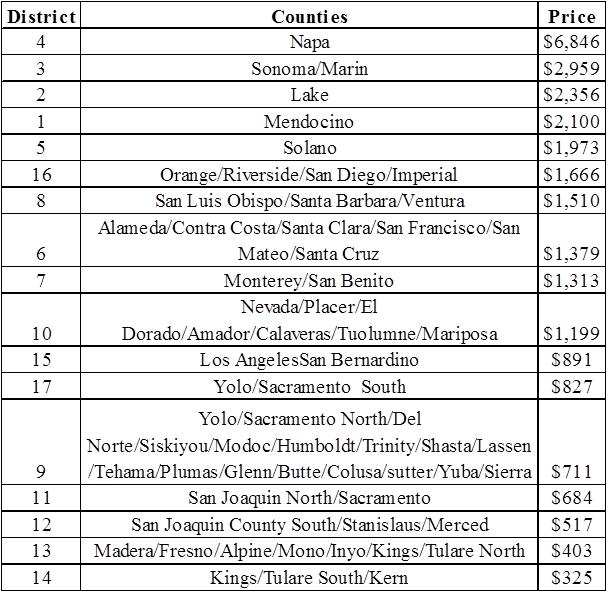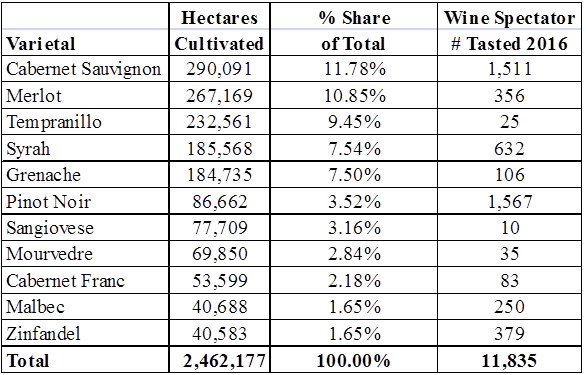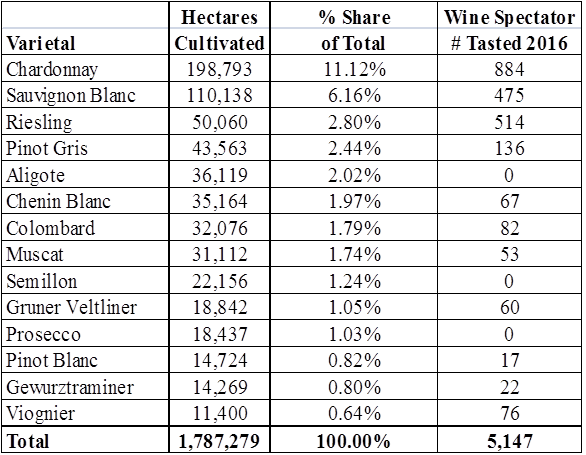Introduction
Times are good in the wine industry. Consumption is growing and French vineyards are selling for millions as are vineyards in Napa. Below, I discuss the reasons things are so good and the few dark clouds on the horizon. In sum, things are good because of vineyard promotions, consumer ignorance and vanity, wine ratings, and good salesmanship. Clouds on the horizon include growing consumer awareness and the “blenders.”

Elliott R. Morss© All Rights Reserved
Vineyards, Varietals, Blends and Bulk
a. Vineyards
We all know just how valuable French vineyards are. Just think: the owners of the Bordeaux vineyards are getting Chinese customers to pay more than $5,000 per bottle! Spectacular marketing! And the Napa vineyard owners are also doing a great job in separating themselves from all the rest. Table 1 shows prices of Californian Cabernet Sauvignon by district. Napa is getting $6,846 per ton or more than twice as much as any other district. That is also great marketing!
Table 1. – California: Cabernet Sauvignon Price/District ($ per ton)

Source: USDA Grape Crush Report
What makes the marketing efforts of these vineyards so amazing? The realities of growing crops: all vineyards are going to have good and bad years. And it is utter nonsense to think the bad years in Bordeaux and Napa are going to be better than the good years elsewhere! Nevertheless, the great marketers stay on top year in and year out even though there are others producing “better” wines.
b. Varietals
Some consumers like to choose wines by the grape/varietal rather than vineyard. Table 2 provides the leading red varietals measured both by acres and number of wine tastings by Wine Spectator (WS) during 2016. These tastings are a rough index of the relative popularity of the different varieties. Pinot Noir is notable. Relatively little is being produced, but at least WS thinks it is popular enough to warrant many tastings. At least some of its popularity stems from the movie “Sideways.”
Table 2. – Leading Red Varietals

Sources: Wine Spectator and Anderson, K. and N. Aryal, Database of Regional, National and Global Winegrape Bearing Areas by Variety, 2000 and 2010, Wine Economics Research Centre, University of Adelaide, December 2013 (revised July 2014).
Table 3 provides the same data for white varietals. It appears that significantly more red wine is under cultivation than white. And for whites, the amount of wine grapes being grown conforms quite closely to the number of wines rated.
Table 3. – Leading White Varietals

Sources: Wine Spectator and K. Anderson and N. Aryal, op. cit.
Can most people tell the difference between the varietals? Consider first the most basic distinction – color. In a recent blind tasting, 3 out of 8 tasters could distinguish between red and white varietals. This is most definitely not impressive. Since we are talking about only two colors, a taster has a 50% chance of guessing the color correctly. I had a chance to talk with the tasters ex-post, and they were amazed at how unsure of they were of their judgments.







